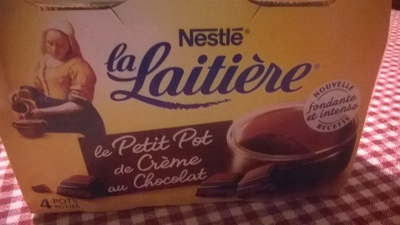La Laitière Le petit pot de Crème au Chocolat - Nestlé
Important note: this product is no longer sold. The data is kept for reference only. This product does not appear in regular searches and is not taken into account for statistics.
This product page is not complete. You can help to complete it by editing it and adding more data from the photos we have, or by taking more photos using the app for Android or iPhone/iPad. Thank you!
×
Barcode: 3023290112236 (EAN / EAN-13)
Common name: Dessert lacté aux oeufs frais et au chocolat, cuit au four
Brands: Nestlé
Categories: Dairies, Desserts, Dairy desserts, Chocolate desserts, Custard puddings, Chocolate custard puddings
Countries where sold: France
Matching with your preferences
Environment
Packaging
Transportation
Report a problem
Data sources
Product added on by openfoodfacts-contributors
Last edit of product page on by moon-rabbit.
Product page also edited by assatadiet, johnjohn, kiliweb, packbot, raphael0202, roboto-app, tacite.
If the data is incomplete or incorrect, you can complete or correct it by editing this page.








